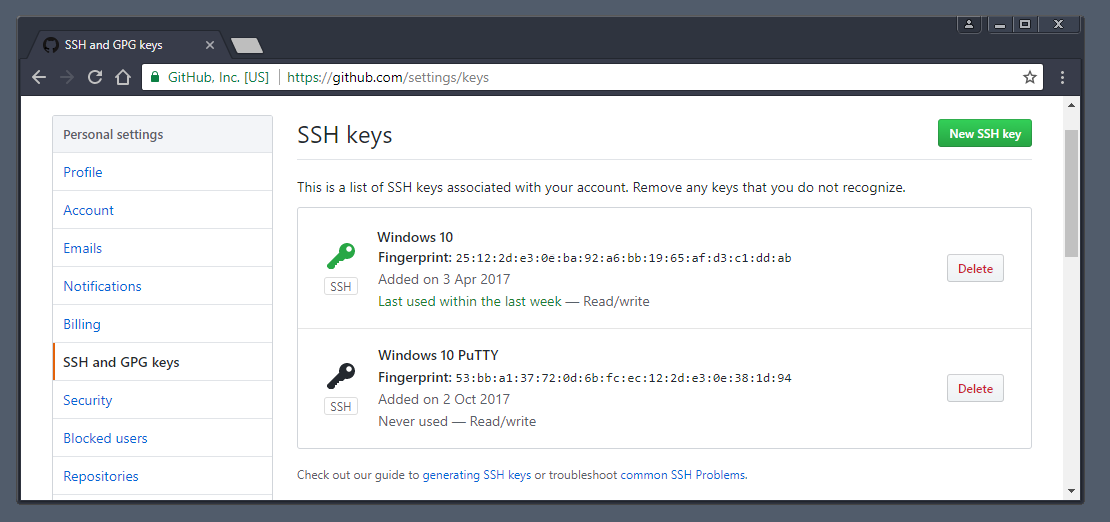

#Ssh_keygen mac generator
Pageant shows your key in the running list.įrom Sourcetree, open the PuTTY Key Generator dialog by going to Tools > Create or Import SSH Keys.Ĭlick Load, navigate to your SSH folder, and click the private key.Įnter your passphrase for the SSH key and click OK. In the Select Private Key File dialog, navigate to the private key file you saved in Step 1 and click Open.Įnter the passphrase for your SSH key and click OK. The system displays the Select Private Key File dialog. Load your private key into Pageant to automatically authenticate so that you don't need to enter your passphrase.ĭouble-click the Pageant (PuTTY Authentication Agent) icon in your system tray to open the Pageant Key List dialog. Sourcetree comes with an SSH authentication agent called Pageant. From the save dialog, choose where to save your private key, name the file, and click Save. From the save dialog, choose where to save your public key, name the file, and click Save.Ĭlick Save private key.
#Ssh_keygen mac update
Update the Key comment with something that distinguishes it from your other SSH keys.Įnter a passphrase for your SSH key in the Key passphrase and Confirm passphrase fields.Ĭlick Save public key. When SSH key generation is complete, you see the public key and a few other fields. Create an SSH keyįrom Tools, select Create or Import SSH Keys.įrom the PuTTY Key Generator dialog, click the Generate button.Īs the SSH key generates, hover your mouse over the blank area in the dialog. Use this section to create as many SSH keys as you need when using Sourcing on Windows. Set up additional SSH keys with Sourcetree (on Windows) Git clone you want to change the URL of an existing repository using HTTPS or a different SSH URL, change the remote URL for your repository. Next time you clone a repository, use the SSH URL for that repository and replace git in the part of the URL with your Bitbucket username. Bitbucket sends you an email to confirm the addition of the key. Paste the copied public key into the SSH Key field:Ĭlick Save. Linux: Copy the output to the clipboard with this command: $ cat ~/.ssh/įrom Bitbucket, enter a Label for your new key, for example, Public key #2. MacOS: Copy the output to the clipboard with this command: $ pbcopy Windows: Open your ~/.ssh/ file and copy its contents. If you have any existing keys, those appear on this page. On the SSH keys page, copy the contents of your public key file. On the Account settings page, click SSH keys. If you have an account that you access from two different locations, add both keys to that account.įrom Bitbucket, choose Personal settings from your avatar in the lower left. Add the public key to your Account settingsĪdd each public SSH key into the corresponding account. Make sure you're adding it to the right account. Your public key has been saved in /Users//.ssh/.pub.ħa:9c:b2:9c:8e:4e:f4:af:de:70:77:b9:52:fd:44:97 Īdd your new SSH key to your account. Your identification has been saved in /Users//.ssh/. It won't work in the Command prompt.Įnter passphrase (empty for no passphrase): You can only enter ssh-keygen into the Git Bash window. In place of, enter the username of the Bitbucket account for which you're creating the SSH key. For example, if you have four Bitbucket accounts, you need to generate 3 new SSH keys, meaning you'll have 4 keys in all.

You'll need to create an additional SSH key for each extra Bitbucket account you have or each computer you use. Update the remote URL with your Bitbucket username by replacing with For this step and the ones that follow, enter your username in place of. When using Git, you can use this section to create as many SSH keys as you need on Windows, macOS, or Linux. This one SSH key is your default identity because it's the key that Bitbucket checks first when authenticating. If you don't have an SSH key, follow the steps on Set up an SSH key. By this point, you should have already created at least one SSH key.


 0 kommentar(er)
0 kommentar(er)
